Cultural heritage broadly consists of physical features of historic importance (both statutory and non-statutory), their settings and also their historic character and landscape of an area. Key features include Scheduled Monuments, Listed Buildings, Conservation Areas, Historic Parks and Gardens, and sites listed on the Sites and Monuments Record and archaeological deposits.
Number and Condition of Scheduled Monuments
Scheduling is the process through which nationally important sites and monuments are given legal protection by being placed on a schedule. Scheduled Monuments cover the whole range of archaeological sites and are not always visible or above ground sites. Table 17 indicates the number of Scheduled Monuments in Wales and in Eryri with the distribution of Scheduled Monuments in the National Park shown on Figure 14.
Number of Scheduled Monuments
Wales: 4,183
Snowdonia: 374
The table below provides details of the condition of the Scheduled Monuments in the National Park. Whilst not all Scheduled Monuments in the National Park have had their condition assessed, over 97% were considered to be in a ‘stable’ condition. The deterioration of other sites is largely attributed to the natural decay, erosion by livestock, agricultural operations, visitors and overgrowth by vegetation.
Condition of Scheduled Monuments in Eryri (1996–2003)
Percentage in “Improved” condition: 1.55%
Percentage in “Stable” condition: 97.2%
Percentage in “Worsened” condition: 1.25%
Source: Cadw
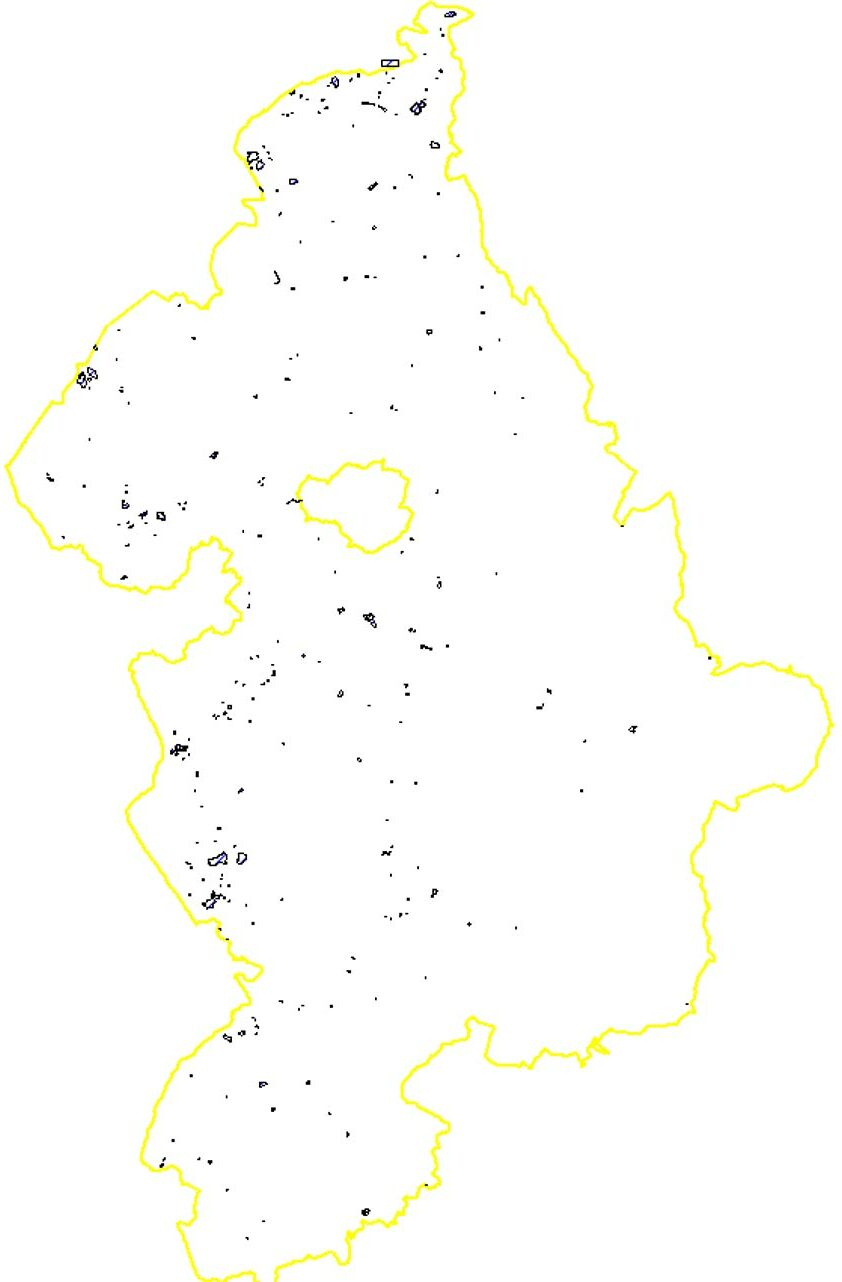
Above: SAM Sites within Eryri National Park
Built Environment
Listed Buildings
The listing process ensures that buildings of ‘special architectural or historic interest’ are placed on a list and afforded statutory protection. The number and grade of Listed Buildings in Eryri is shown below. Cadw are currently re-surveying Community Council areas within the National Park. Six areas remain to be surveyed and the number of Listed Building is expected to rise to approximately 1900.
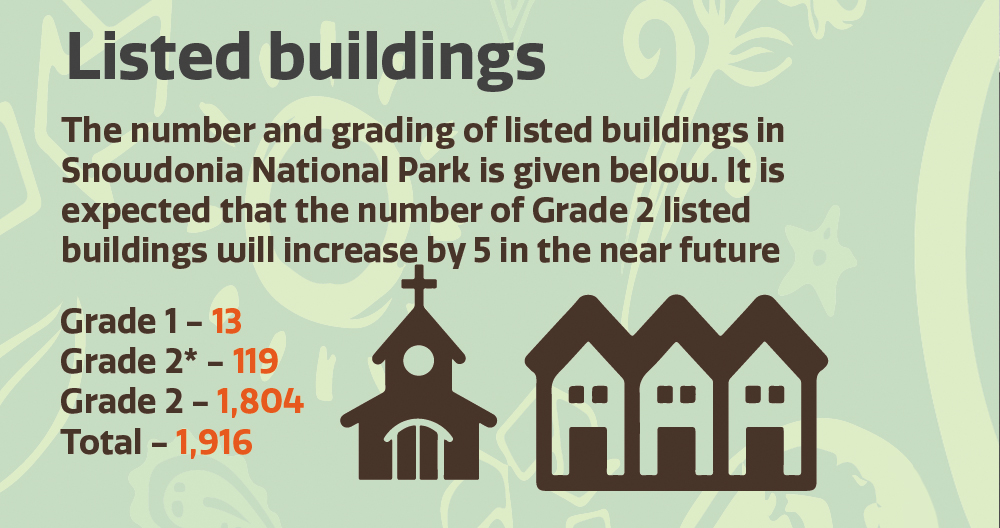
Buildings ‘At Risk’
Buildings ‘At Risk’ are defined as those Listed, or traditional buildings of important architectural merit, which are under threat. The number of buildings on the register maintained by the Authority varies as buildings are repaired and are removed from the register and as surveys reveal further buildings to be at risk.
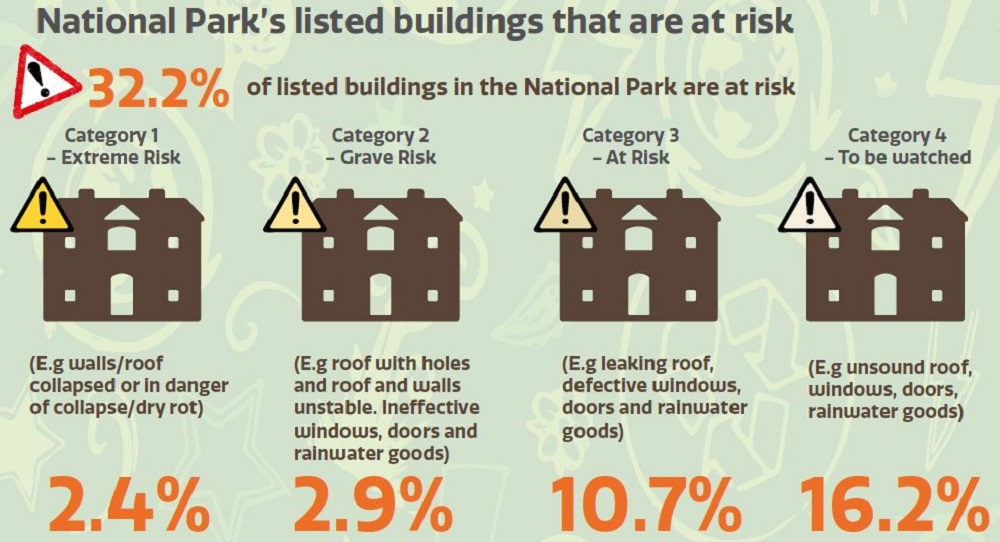
Conservation Areas
Conservation Areas are areas of special architectural or historic interest, the character or appearance of which is desirable to preserve. They are a statutory designation and they help to ensure the positive management of buildings within them and their character.
There are fourteen Conservation Areas in Eryri. These are:
- Betws y Coed
- Beddgelert
- Nantmor
- Dolbenmaen
- Maentwrog
- Y Bala
- Harlech
- Dolgellau
- Cymer Abbey
- Pant y Rodyn
- Aberdyfi
- Abergwyngregyn
- Llanllechid
- Nant Peris
Source: Snowdonia National Park Authority, 2005
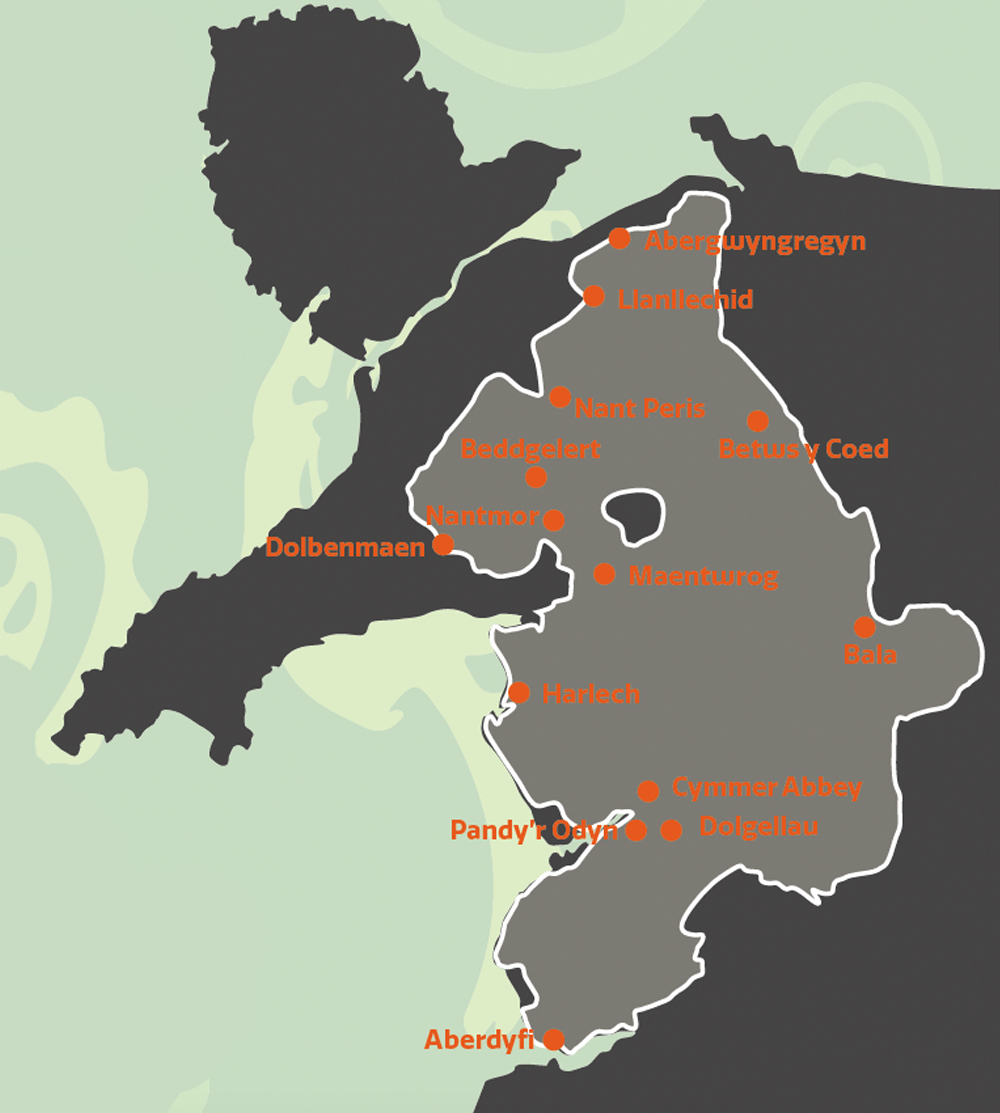
Historic Battlefields
There are no historic battlefields in the National Park.
Welsh Language Skills and Profile
The most recent census data show that the numbers of Welsh speakers in Wales declined between 2001 and 2011. In 1911 the figure for the number of people who could speak Welsh was close to a million. The figure fell during the twentieth century until reaching a low of 504,000 in 1981. There was a slight increase in the number of Welsh speakers between 1981 and 2001 before falling again, although the 2011 figure is larger than that of 1991.
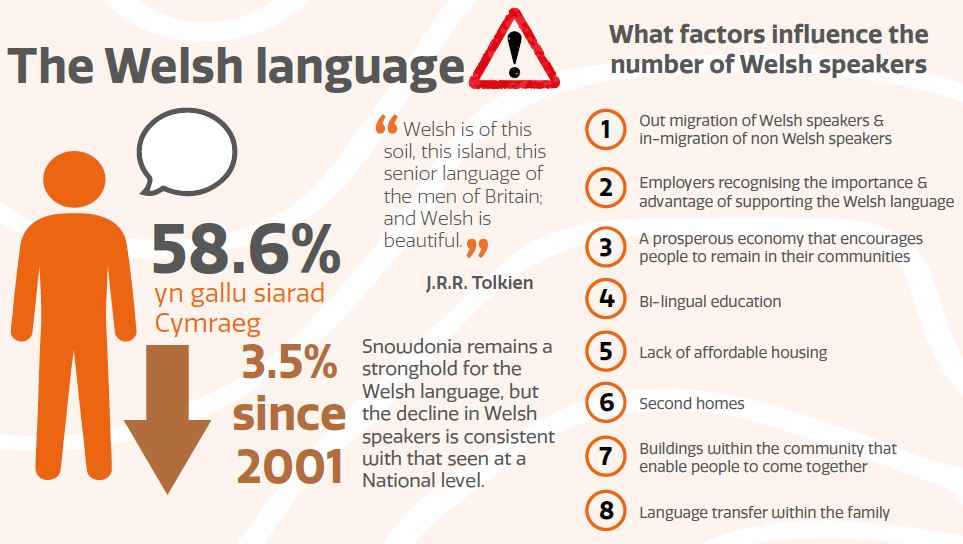
Welsh Language Skills
No skills in Welsh
Actual number: 8,104
SNPA 2011 Census: 32.5%
SNPA 2001 Census: 30.2%
Wales 2011 Census: 73.3%
Wales 2001 Census: 71.6%
Can understand spoken Welsh only
Actual number: 1,861
SNPA 2011 Census: 7.5%
SNPA 2001 Census: 6.1%
Wales 2011 Census: 5.3%
Wales 2001 Census: 4.9%
Can speak Welsh
Actual number: 14,626
SNPA 2011 Census: 58.6%
SNPA 2001 Census: 62.1%
Wales 2011 Census: 19.0%
Wales 2001 Census: 20.5%
Can speak, but cannot read or write Welsh
Actual number: 1,334
SNPA 2011 Census: 5.3%
SNPA 2001 Census: 5.3%
Wales 2011 Census: 2.7%
Wales 2001 Census: 2.8%
Can speak and read but cannot write Welsh
Actual number: 834
SNPA 2011 Census: 3.3%
SNPA 2001 Census: 2.3%
Wales 2011 Census: 1.5%
Wales 2001 Census: 1.4%
Can speak, read and write Welsh
Actual number: 12,413
SNPA 2011 Census: 49.7%
SNPA 2001 Census: 54.5%
Wales 2011 Census: 14.6%
Wales 2001 Census: 16.3%
Other combination of skills in Welsh
Actual number: 413
SNPA 2011 Census: 1.7%
SNPA 2001 Census: 1.6%
Wales 2011 Census: 12.5%
Wales 2001 Census: 3%
The change in Welsh speakers in the National Park is consistent with the trend seen at the national level. There was a 3.5% decrease in the number of people who could speak the language between 2001 and 2011. This percentage of reduction is larger the national average of 2%. There was a significant change in the percentage of people who could speak, read and write in Welsh, with a decrease of 4.8%. There was a 2.3% increase in the percentage of people with no Welsh language skills within Eryri.
Between 2001 and 2011although there was an increase in the number of children ( 3-4) and adults (20-44) who could speak Welsh there at the national level, there was a decline in every other age group. There was a decrease in the number of people aged over 3 years old who could speak Welsh in almost every local authority, with the largest decreases in occurring in areas with a tradition of a high level of Welsh speakers.
There are many possible reasons for this reduction. At the national level there have been a number of demographic changes over the years; changes which also apply to Eryri National Park level. The reasons for these changes include:
- fewer young children
- increase in inward migration among older, non-Welsh speaking adults
- loss of older Welsh speakers
- migration to other parts of the UK and
- some losing their Welsh language skills between the two censuses(e.g. some identified with Welsh language skills in 2001, not identified in 2011).
Source: Welsh Government Statistical Bulletin

